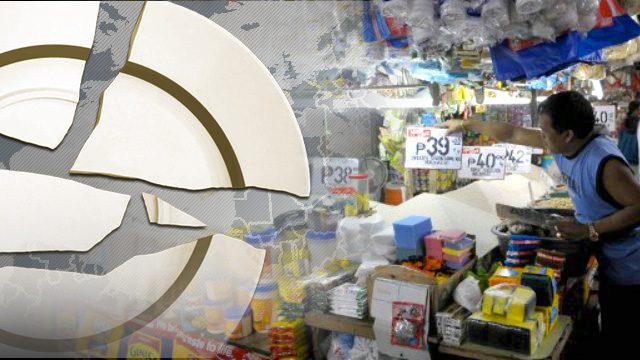SUMMARY
This is AI generated summarization, which may have errors. For context, always refer to the full article.

MANILA, Philippines – Low and low-middle-income countries remain to be the most vulnerable to food price shocks despite “improvements in food security,” the 2015 Global Food Security Index (GFSI) says.
Price shocks refer to the effects of a sudden increase of prices of food products. This, especially when felt by the underprivileged, can lead to problems of hunger and malnutrition.
41 out of the 109 countries assessed in the GFSI were found to be at higher risk of hunger and malnutrition and similar challenges at the onset of food price shocks.
These countries are located in Asia, Middle East, and North and Sub-Saharan Africa.
The GFSI was established in 2012 to identify and assess which are the most and least food insecure countries in the world through various indicators such as availability, affordability, and quality. (READ: PH ranks 72nd in 2015 Global Food Security Index)
Preventing another crisis
In 2008, a food price crisis affected the whole world after even the prices of staple food products increased drastically. According to the International Food Policy Research Institute, rice prices rose by 224%, wheat prices increased by 108%, and corn, by 89%.
The Asian Development Bank (ADB) found that more than 100 million people fell into the hunger trap due to the price increase.
People affected – especially those from low and low-middle-income countries – spend a huge portion of their monthly income on food already.
When prices go up, they have no other choice but to adjust their budget and even the portion of their daily meals. With less to eat, the nutritional state of the affected population declined during those years.
According to the World Bank in 2011, the continuous rise of food prices drove an estimated 44 million people to the poverty trap.
It is also estimated that 64 million people will suffer from hunger with every 10% increase in world food prices.
In the Southeast Asian region, where most of the vulnerable countries are located, people have developed an integrated food security framework to answer the looming problems of hunger and food insecurity in the region. (READ: How ASEAN is trying to end hunger and food insecurity)
What should be done
The United Nations believes that to minimize the impact of another global food price crisis on the poor, food should be where it is severely needed.
As much as it is important for a vulnerable and poor country to produce its own food, it is also valuable for the government to exert extra effort in agricultural research and development. (READ: How can government lower food prices in the Philippines?)
This way, problems could be foreseen and solutions could be implemented even before a global food price crisis and food insecurity severely affect a country.
Government interventions will likely heap positive outcomes such as decreased excessive dependence on food imports while protecting the livelihoods of farmers. (READ: PH agriculture: Why is it important?)
In the Philippines, an agricultural country, workers in the agricultural sector belong to the poorest population. They are also the lowest paid workers. (READ: Pangilinan: Want economic growth? Put farmers, fisherfolk first)
Empowering them will likely be a win-win situation: they escape from the poverty trap while food security is assured in the country.
According to Arif Husain of the World Food Programme (WFP), safety nets in terms of programs should be established “during good times” while avoiding short-term solutions such as panic-buying.
He also suggested that small-scale farmers should be connected to community markets – where they can directly sell their goods – to solve the food crisis or shortage at the grassroots level.
By empowering the most vulnerable, they – coupled with the right policies, priorities, and investments – can be the key to ending world hunger. – Rappler.com
Add a comment
How does this make you feel?
There are no comments yet. Add your comment to start the conversation.